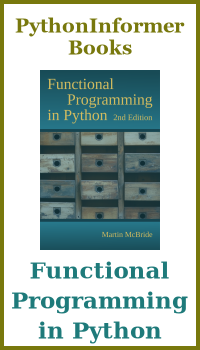Matplotlib introduction
Categories: matplotlib numpy

Matplotlib is a versatile 2D plotting library. The main website is here, but in these tutorials we will highlight some of the main features, using simple examples.
Matplotlib can be used to create quick plots, from a Python script or even the Python console. You can create a plot with a couple of lines of code, using the default styling. If you want more control, the API lets you set all aspects of the plot, such as the fonts, colours and line styles. You can add titles, place several plots in the same image, control the axes, and so on.
Matplotlib is an important component of Python's support for data science. You can use Matplotlib with NumPy, which allows you to interface with any other library that supports numpy data, such as scipy, pandas etc.
It can also be integrated into UI applications (using Tkinter, wxWidgets or Qt for example), and can be used in a webserver backend to serve dynamic graphs (for example using Flask of Django).
Installation
Later versions of Matplotlib can be installed using
pip install matplotlib
or see the main Matplotlib website for other options.
Data and code
All the data and code used in this tutorial is available on github, as described in Data and code.
In this section
Related articles
Join the GraphicMaths/PythonInformer Newsletter
Sign up using this form to receive an email when new content is added to the graphpicmaths or pythoninformer websites:

Popular tags
2d arrays abstract data type and angle animation arc array arrays bar chart bar style behavioural pattern bezier curve built-in function callable object chain circle classes close closure cmyk colour combinations comparison operator context context manager conversion count creational pattern data science data types decorator design pattern device space dictionary drawing duck typing efficiency ellipse else encryption enumerate fill filter for loop formula function function composition function plot functools game development generativepy tutorial generator geometry gif global variable greyscale higher order function hsl html image image processing imagesurface immutable object in operator index inner function input installing integer iter iterable iterator itertools join l system lambda function latex len lerp line line plot line style linear gradient linspace list list comprehension logical operator lru_cache magic method mandelbrot mandelbrot set map marker style matplotlib monad mutability named parameter numeric python numpy object open operator optimisation optional parameter or pandas path pattern permutations pie chart pil pillow polygon pong positional parameter print product programming paradigms programming techniques pure function python standard library range recipes rectangle recursion regular polygon repeat rgb rotation roundrect scaling scatter plot scipy sector segment sequence setup shape singleton slicing sound spirograph sprite square str stream string stroke structural pattern symmetric encryption template tex text tinkerbell fractal transform translation transparency triangle truthy value tuple turtle unpacking user space vectorisation webserver website while loop zip zip_longest
